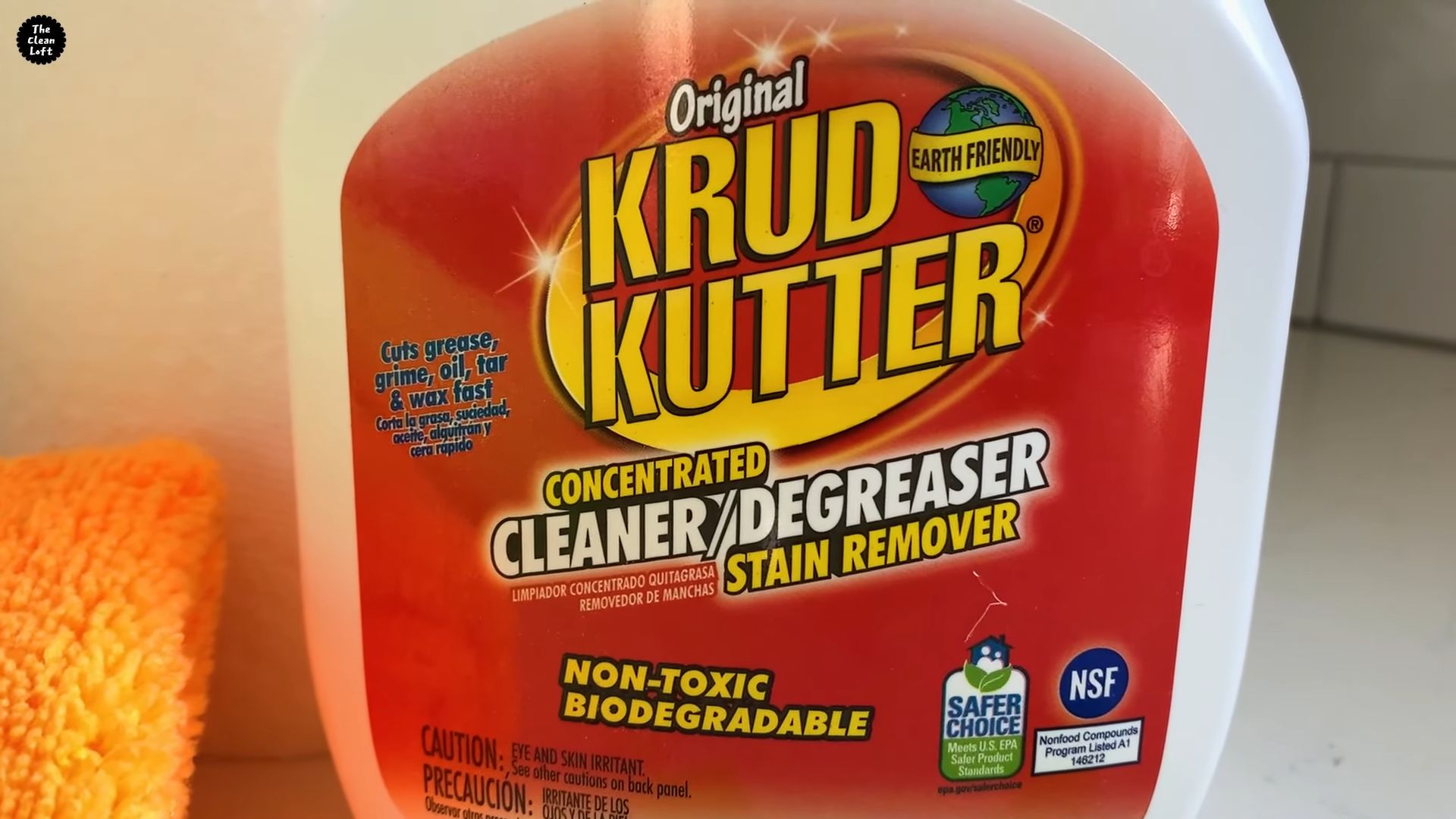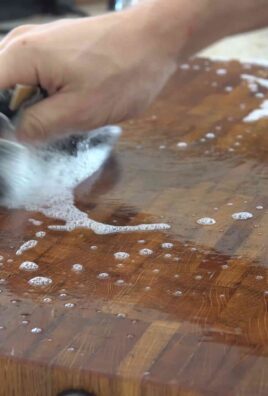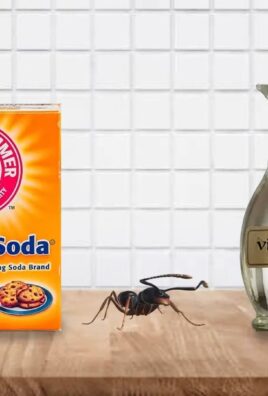Clean grease kitchen cabinets – sounds like a chore, right? But what if I told you it could be a surprisingly satisfying DIY project? We’ve all been there, staring at those sticky, grimy cabinets, wondering how they got so bad and dreading the elbow grease required to restore them. But fear not, fellow homeowners! This isn’t just about cleaning; it’s about reclaiming your kitchen and breathing new life into the heart of your home.
Historically, keeping a clean kitchen has always been a sign of a well-maintained and cared-for household. Think about it – our grandmothers and great-grandmothers didn’t have fancy cleaning products, yet their kitchens often sparkled. They relied on simple, effective methods, often using natural ingredients. We’re channeling that same resourceful spirit in this guide.
Why is learning how to clean grease kitchen cabinets so crucial? Because grease buildup isn’t just unsightly; it can also attract dust, dirt, and even pests. Plus, a clean kitchen is a healthier kitchen. And let’s be honest, who doesn’t feel a sense of accomplishment after tackling a tough cleaning task and seeing the amazing results? I’m going to share some simple, effective, and even fun DIY tricks and hacks to make this task less daunting and more rewarding. Get ready to say goodbye to greasy cabinets and hello to a sparkling clean kitchen!

DIY Guide: Banish Grease from Your Kitchen Cabinets!
Hey there, fellow DIY enthusiasts! Are your kitchen cabinets looking a little…slick? Don’t worry, you’re not alone. Grease buildup is a common kitchen woe, but thankfully, it’s totally conquerable with a little elbow grease (pun intended!) and some simple household ingredients. I’m going to walk you through my favorite methods for getting those cabinets sparkling clean again. Let’s get started!
Gather Your Supplies
Before we dive in, let’s make sure we have everything we need. This will save you time and frustration later. Here’s my go-to list:
* Microfiber cloths: These are your best friends for gentle yet effective cleaning. Avoid abrasive scrubbers that can scratch your cabinet finish.
* Soft-bristled brush (optional): An old toothbrush or a small cleaning brush can be handy for getting into tight corners and crevices.
* Spray bottles: You’ll need at least one, maybe two, depending on the cleaning solutions you choose.
* Warm water: Essential for rinsing and diluting cleaning solutions.
* Dish soap: A mild dish soap is a great starting point for tackling grease.
* Baking soda: This is a natural abrasive and deodorizer that works wonders on stubborn grease.
* White vinegar: Vinegar is a powerful degreaser and disinfectant.
* Vegetable oil: Yes, you read that right! Oil can actually help dissolve grease.
* Lemon essential oil (optional): Adds a fresh, clean scent.
* Gloves: Protect your hands from harsh cleaning solutions.
* Old towels or drop cloths: To protect your countertops and floors from drips.
* Safety glasses (optional): To protect your eyes, especially when spraying.
Testing Your Cleaning Solution
Important! Before you go wild spraying and scrubbing, it’s crucial to test your chosen cleaning solution in an inconspicuous area of your cabinets. This will ensure that it doesn’t damage the finish. Choose a spot inside a cabinet door or on a lower corner that’s not easily visible. Apply a small amount of the solution, let it sit for a few minutes, and then wipe it off. Check for any discoloration, damage, or changes to the finish. If everything looks good, you’re safe to proceed!
Method 1: Dish Soap and Water – The Gentle Approach
This is my go-to method for lightly greasy cabinets. It’s gentle, effective, and uses ingredients you probably already have on hand.
1. Prepare your solution: In a bowl or spray bottle, mix a few drops of mild dish soap with warm water. You want a slightly soapy solution, not a bubbly one.
2. Dampen your cloth: Dip a microfiber cloth into the soapy water and wring it out well. You want the cloth to be damp, not soaking wet.
3. Wipe the cabinets: Gently wipe down the greasy areas of your cabinets, using a circular motion. Don’t scrub too hard, let the soapy water do the work.
4. Rinse with clean water: Dampen a clean microfiber cloth with plain warm water and wipe away any soap residue.
5. Dry thoroughly: Use a dry microfiber cloth to dry the cabinets completely. This will prevent water spots and streaks.
Method 2: Baking Soda Paste – For Stubborn Grease
When dish soap isn’t enough, baking soda is my secret weapon. Its mild abrasive properties help to lift stubborn grease without scratching the finish.
1. Make a paste: In a small bowl, mix baking soda with a little water to form a thick paste. The consistency should be similar to toothpaste.
2. Apply the paste: Using your fingers or a soft cloth, apply the baking soda paste to the greasy areas of your cabinets.
3. Let it sit: Allow the paste to sit for 5-10 minutes to soften the grease.
4. Gently scrub: Using a damp microfiber cloth or a soft-bristled brush, gently scrub the greasy areas in a circular motion.
5. Rinse thoroughly: Rinse the cabinets with clean water to remove all traces of baking soda.
6. Dry completely: Dry the cabinets with a clean microfiber cloth.
Method 3: Vinegar Solution – The Degreasing Powerhouse
Vinegar is a natural degreaser and disinfectant, making it a great option for tackling tough grease and grime. However, it’s important to dilute it properly to avoid damaging your cabinet finish.
1. Prepare your solution: In a spray bottle, mix equal parts white vinegar and warm water. You can add a few drops of lemon essential oil for a more pleasant scent.
2. Spray the cabinets: Lightly spray the greasy areas of your cabinets with the vinegar solution.
3. Let it sit: Allow the solution to sit for a few minutes to loosen the grease.
4. Wipe clean: Wipe the cabinets clean with a damp microfiber cloth.
5. Rinse with water: Rinse with a clean, damp cloth.
6. Dry thoroughly: Dry the cabinets with a clean microfiber cloth.
Method 4: Oil Cleans Oil – The Surprising Solution
This might sound counterintuitive, but oil can actually help dissolve grease! This method works especially well on greasy fingerprints and sticky residue.
1. Apply the oil: Dip a clean microfiber cloth into a small amount of vegetable oil.
2. Wipe the greasy areas: Gently wipe the greasy areas of your cabinets with the oil-soaked cloth.
3. Let it sit: Allow the oil to sit for a few minutes to dissolve the grease.
4. Wipe away the oil: Use a clean, damp microfiber cloth to wipe away the oil and dissolved grease.
5. Wash with dish soap: Wash the area with a mild dish soap and water solution to remove any remaining oil residue.
6. Rinse and dry: Rinse with clean water and dry thoroughly with a clean microfiber cloth.
Dealing with Nooks and Crannies
Those decorative details and tight corners can be a real pain to clean. Here’s how I tackle them:
1. Use a soft-bristled brush: An old toothbrush or a small cleaning brush is perfect for getting into those hard-to-reach areas. Dip the brush into your chosen cleaning solution and gently scrub away the grease and grime.
2. Cotton swabs: For really tight spots, cotton swabs dipped in cleaning solution can be a lifesaver.
3. Patience is key: Don’t rush the process. Take your time and work your way around the details.
Cleaning Around Hardware
Cabinet knobs and pulls can accumulate grease and grime over time. Here’s how to clean them:
1. Remove the hardware (optional): If possible, remove the knobs and pulls from the cabinets. This will make it easier to clean them thoroughly.
2. Soak in soapy water: Soak the hardware in a bowl of warm, soapy water for a few minutes to loosen the grease and grime.
3. Scrub with a brush: Use a soft-bristled brush to scrub the hardware clean.
4. Rinse and dry: Rinse the hardware with clean water and dry it thoroughly before reattaching it to the cabinets.
5. Clean around the hardware: If you don’t remove the hardware, use a cotton swab or a soft cloth to clean around it.
Preventing Future Grease Buildup
Once you’ve got your cabinets sparkling clean, you’ll want to keep them that way! Here are a few tips to prevent future grease buildup:
* Wipe up spills immediately: Don’t let spills sit and harden. Wipe them up as soon as they happen.
* Use your range hood: Always use your range hood when cooking to vent steam and grease away from your cabinets.
* Regular cleaning: Wipe down your cabinets regularly with a damp cloth to remove any grease or grime before it builds up. A quick wipe down once a week can make a big difference.
* Consider a protective coating: You can apply a protective coating, such as a furniture polish or wax, to your cabinets to help repel grease and make them easier to clean. Be sure to test the product in an inconspicuous area first.
A Note on Different Cabinet Finishes
The cleaning method you choose may depend on the type of finish on your cabinets.
* Painted cabinets: These are generally durable and can be cleaned with most of the methods described above. However, avoid using harsh abrasives or solvents that could damage the paint.
* Wood cabinets: Wood cabinets can be more delicate and may require a gentler approach. Avoid using excessive water, which can damage the wood.
* Laminate cabinets: Laminate cabinets are generally easy to clean and can be wiped down with

Conclusion
So, there you have it! A simple, effective, and budget-friendly way to tackle that stubborn grease buildup on your kitchen cabinets. We’ve walked you through the process, highlighting the ease and accessibility of using readily available ingredients to achieve sparkling clean results. But why is this DIY trick a must-try?
Firstly, it’s a cost-effective alternative to expensive commercial cleaners. You’re likely to have most, if not all, of the necessary ingredients already in your pantry. Secondly, it’s a safer option, avoiding harsh chemicals that can be harmful to your health and the environment. Finally, and perhaps most importantly, it works! This method effectively cuts through grease, leaving your cabinets looking fresh and revitalized.
Beyond the basic recipe, there are several variations you can explore to tailor the cleaning solution to your specific needs and preferences. For instance, if you’re dealing with particularly stubborn grease stains, consider adding a tablespoon of borax to the mixture for extra cleaning power. For a refreshing scent, infuse your solution with a few drops of your favorite essential oil, such as lemon, orange, or tea tree oil, all known for their degreasing properties. Always test any new solution on an inconspicuous area first to ensure it doesn’t damage the finish of your cabinets.
Remember, the key to success is consistency. Regular cleaning, even a quick wipe-down every week or two, will prevent grease from building up to the point where it becomes a major chore. This DIY method is perfect for maintaining the cleanliness of your cabinets and keeping your kitchen looking its best.
We are confident that you’ll be amazed by the results. This simple DIY method to clean grease kitchen cabinets is a game-changer. Don’t just take our word for it, though. We encourage you to give it a try and see for yourself the difference it can make.
Once you’ve tried this method, we’d love to hear about your experience! Share your before-and-after photos, tips, and variations in the comments section below. Let’s create a community of clean kitchen enthusiasts and help each other keep our cabinets sparkling! Your insights could be invaluable to others who are struggling with greasy cabinets. So, grab your supplies, roll up your sleeves, and get ready to transform your kitchen!
Frequently Asked Questions (FAQs)
What kind of cabinets is this DIY cleaning method suitable for?
This DIY cleaning method is generally safe for most types of kitchen cabinets, including those made of wood, laminate, and painted surfaces. However, it’s crucial to test the solution on an inconspicuous area first, such as the inside of a cabinet door, to ensure it doesn’t damage the finish. This is especially important for older or more delicate cabinets. If you have antique or very valuable cabinets, it’s always best to consult with a professional cleaning service before attempting any DIY cleaning methods. For cabinets with a high-gloss finish, use a very diluted solution and avoid abrasive scrubbing to prevent scratching.
How often should I clean my kitchen cabinets to prevent grease buildup?
The frequency of cleaning depends on how often you cook and the type of cooking you do. If you cook frequently, especially dishes that involve frying or sautéing, you should aim to clean your cabinets at least once a week. A quick wipe-down with a damp cloth and a mild cleaning solution can prevent grease from accumulating and becoming difficult to remove. For less frequent cooks, cleaning every two to three weeks may be sufficient. Regularly wiping down your cabinets after cooking can also significantly reduce the need for deep cleaning.
What if the grease is really stubborn and doesn’t come off easily?
For stubborn grease stains, you can try a few different approaches. First, let the cleaning solution sit on the grease for a longer period, perhaps 5-10 minutes, before wiping it off. This will give the solution more time to penetrate and loosen the grease. You can also try using a slightly more concentrated solution, but be careful not to make it too strong, as this could damage the cabinet finish. Another option is to use a soft-bristled brush or a non-abrasive sponge to gently scrub the grease. Avoid using steel wool or other abrasive materials, as these can scratch the surface of your cabinets. As mentioned earlier, adding a tablespoon of borax to the cleaning solution can also provide extra cleaning power for particularly stubborn grease.
Can I use vinegar on all types of kitchen cabinets?
While vinegar is a great natural cleaner, it’s important to use it with caution on certain types of kitchen cabinets. Vinegar is acidic and can potentially damage or discolor some finishes, especially those on natural wood or painted cabinets. Always dilute vinegar with water before using it to clean your cabinets. A good ratio is 1 part vinegar to 2 parts water. As with any cleaning solution, test it on an inconspicuous area first to ensure it doesn’t cause any damage. If you’re unsure about using vinegar on your cabinets, it’s best to err on the side of caution and use a milder cleaning solution, such as dish soap and water.
What are some other natural alternatives to commercial degreasers?
Besides vinegar, there are several other natural alternatives to commercial degreasers that you can use to clean your kitchen cabinets. Baking soda is a mild abrasive that can help to scrub away grease and grime. You can make a paste of baking soda and water and apply it to the greasy areas, then wipe it off with a damp cloth. Lemon juice is another excellent degreaser due to its acidity. You can mix lemon juice with water and use it as a spray cleaner. Essential oils, such as lemon, orange, and tea tree oil, also have degreasing properties and can be added to your cleaning solution for a refreshing scent.
How can I prevent grease from splattering on my kitchen cabinets in the first place?
Prevention is always better than cure! There are several things you can do to minimize grease splatter on your kitchen cabinets. Use splatter screens when frying or sautéing food. These screens will catch most of the grease that splatters out of the pan. Clean up spills and splatters immediately. The longer grease sits on your cabinets, the harder it will be to remove. Use your range hood or exhaust fan when cooking. This will help to vent the grease and steam out of your kitchen. Consider using a backsplash behind your stovetop. A backsplash will protect your walls and cabinets from grease and splatters.
What if I have laminate cabinets? Does this method still work?
Yes, this method is generally safe for laminate cabinets. Laminate is a durable material that can withstand most cleaning solutions. However, it’s still important to test the solution on an inconspicuous area first to ensure it doesn’t damage the finish. Avoid using abrasive cleaners or scrub brushes on laminate cabinets, as these can scratch the surface. A soft cloth or sponge is best for cleaning laminate. Also, be sure to wipe up any excess moisture after cleaning to prevent water damage.
My cabinets have a sticky residue even after cleaning. What should I do?
If your cabinets still have a sticky residue after cleaning, it could be due to a buildup of old cleaning products or a particularly stubborn type of grease. Try using a solution of warm water and a small amount of dish soap to remove the residue. You can also try using a microfiber cloth to wipe down the cabinets, as these cloths are very effective at removing dirt and grime. If the residue persists, you may need to use a commercial degreaser specifically designed for kitchen cabinets. Be sure to follow the manufacturer’s instructions carefully and test the product on an inconspicuous area first.





Leave a Comment